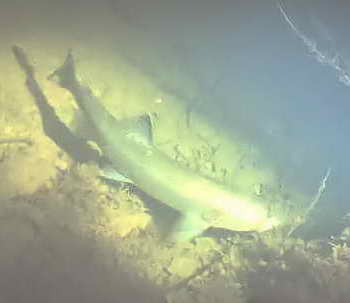
| Friends of Five Creeks |
|
Above: "Keith Falls," a small waterfall on Codornices Creek above Keith Street. Below: Schoolchildren discover creek life in Codornices Creek at Live Oak Park.
|
Old but good background:
Pruning (above) and planting (below) on lower Codornices Creek.
|
Codornices Creek
 New: trout are again being seen in the creek, though in small numbers. See our November e-news for details. We can all help:
New: trout are again being seen in the creek, though in small numbers. See our November e-news for details. We can all help:
-
Creek neighbors can avoid disturbing bed and banks, keep EBMUD water out of the creek, and report problems.
-
All can follow the rule "only rain down the storm drain," and use alternatives to toxic herbicides and pesticides that may wash to storm drains.
-
We can drive less -- pollutants washing from streets to creeks come from tires, brakes, gas, and oil.
Click here to see our slide show, Codornices Creek -- Chapters in an Unfinished History. Slides are set to advance slowly -- click to move faster.
Codornices is our area's most intact creek, with a population of steelhead/rainbow trout that we discovered (these are the same species). Watch this video of steelhead in Codornices Creek.
The creek starts as several small streams in the Berkeley Hills, some with beautiful waterfalls. The Friends of Five Creeks have carried out several small projects along these headwater streams, in parks or along Berkeley's historic path network, including installing interpretive signs. In Codornices Park, we helped remove ivy and fire-prone French broom. In part of Live Oak Park, Friends of Five Creeks volunteers including neighbors and schoolchildren planted natives along a creekside trail. (slide show).
Our larger projects are lower on the creek. Our first big project, begun in 1999, was reviving the sit where Codornices Creek crosses the Ohlone Greenway, the regional bicycle-pedestrian trail on the BART right-of-way. Inspired and led by local architect Todd Jersey, we replaced ivy and trash with native plants, improved access, and built a handsome observation railing on Codornices Creek at the Ohlone Greenway. See our slide shows.
Working at the Ohlone Greenway site, Todd Jersey noticed trout in the pool there. This led to our establishing that these fish are Rainbow trout/Steelhead (the same species, Oncorhyncus mykiss). Central Coast steelhead are listed as threatened, so this discovery became a major factor in a long-term plan to restore the degraded creek from Kains Street downstream. Friends of Five Creeks has been part of this in many ways, from advocacy to major work parties thinning overgrown vegetation or planting natives, to ongoing volunteer maintenance as we campaigning for adequate maintenance by the three agencies responsible: Albany, Berkeley, and UC Berkeley.
As in other urban creeks, flows in Codornices rise and fall at almost flash-flood speed during storms. This "flashiness" of urban creeks is due to the impermeable streets, sidewalks, roofs, and parking lots that cover our cities. Water can no longer soak into soil, so it rushes to creeks via storm drains. The result is erosion, floods, and harm to wildlife, as small creatures can be swept downstream.
There is a possibility of someday expanding the salt marsh south of Buchanan Street, near the creek's mouth, on property belonging to Golden Gate Fields race track. See our feasibility study by Balance Hydrologics. This project is likely to await longer-term planning of the future of this property.



